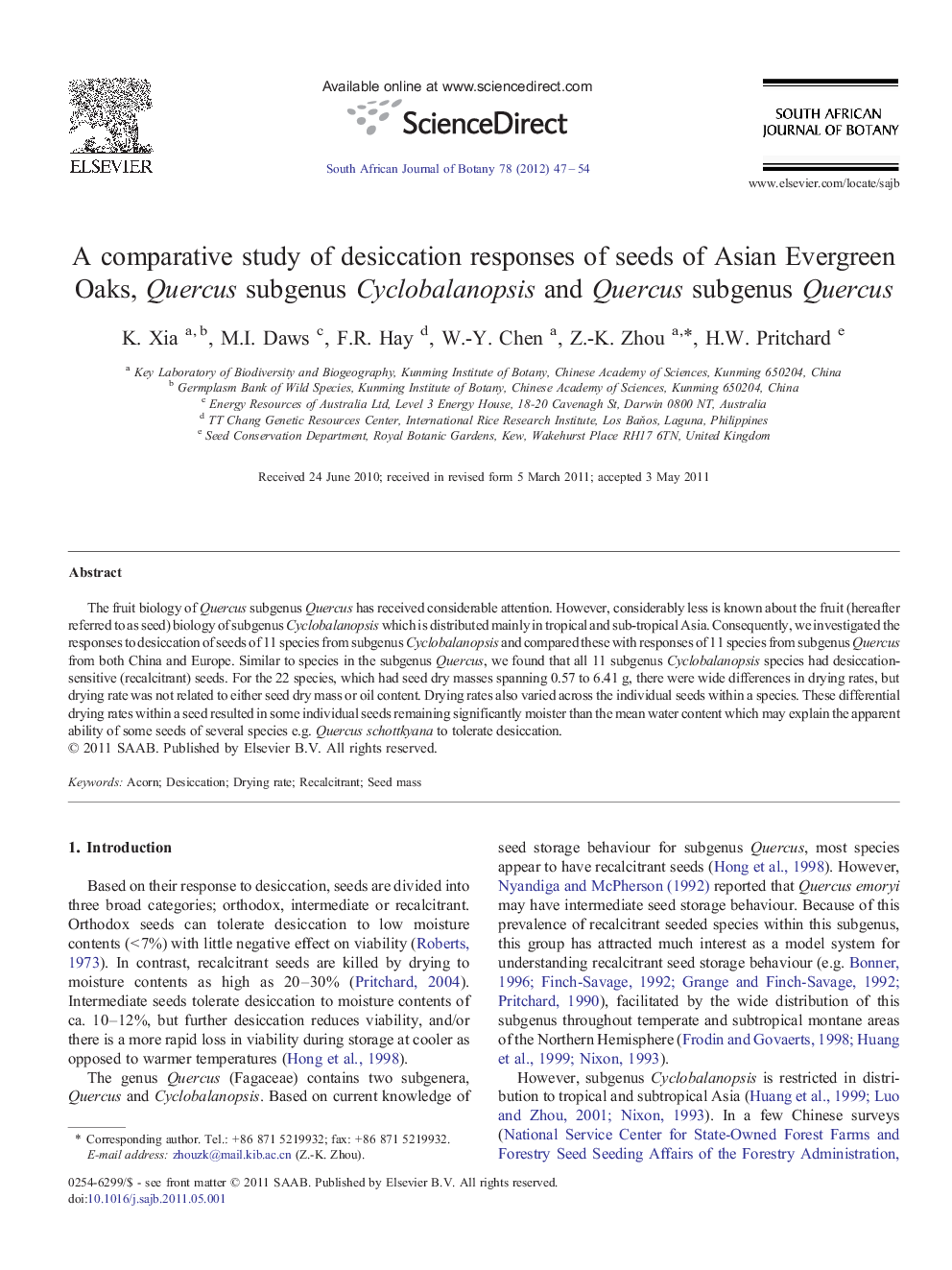| Article ID | Journal | Published Year | Pages | File Type |
|---|---|---|---|---|
| 4521042 | South African Journal of Botany | 2012 | 8 Pages |
The fruit biology of Quercus subgenus Quercus has received considerable attention. However, considerably less is known about the fruit (hereafter referred to as seed) biology of subgenus Cyclobalanopsis which is distributed mainly in tropical and sub-tropical Asia. Consequently, we investigated the responses to desiccation of seeds of 11 species from subgenus Cyclobalanopsis and compared these with responses of 11 species from subgenus Quercus from both China and Europe. Similar to species in the subgenus Quercus, we found that all 11 subgenus Cyclobalanopsis species had desiccation-sensitive (recalcitrant) seeds. For the 22 species, which had seed dry masses spanning 0.57 to 6.41 g, there were wide differences in drying rates, but drying rate was not related to either seed dry mass or oil content. Drying rates also varied across the individual seeds within a species. These differential drying rates within a seed resulted in some individual seeds remaining significantly moister than the mean water content which may explain the apparent ability of some seeds of several species e.g. Quercus schottkyana to tolerate desiccation.
Research Highlights► We show that seeds of all the 11 Asian evergreen oaks (Quercus subgenus Cyclobalanopsis, Fagaceae) species have desiccation-sensitive (recalcitrant) seeds. ► Across the study species (including European Quercus subgenus Quercus species) there were wide variations in seed dry masses, drying rates between species and between the individual seeds within a species. ► This work represents new records of desiccation sensitivity for 8 and 2 species in subgenus Cyclobalanopsis and subgenus Quercus.
